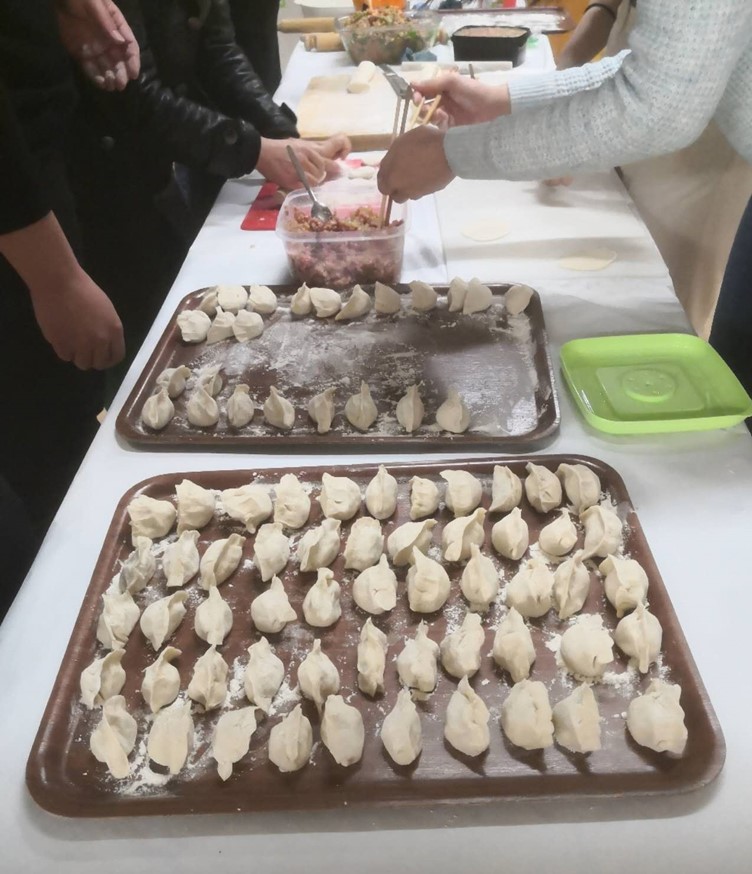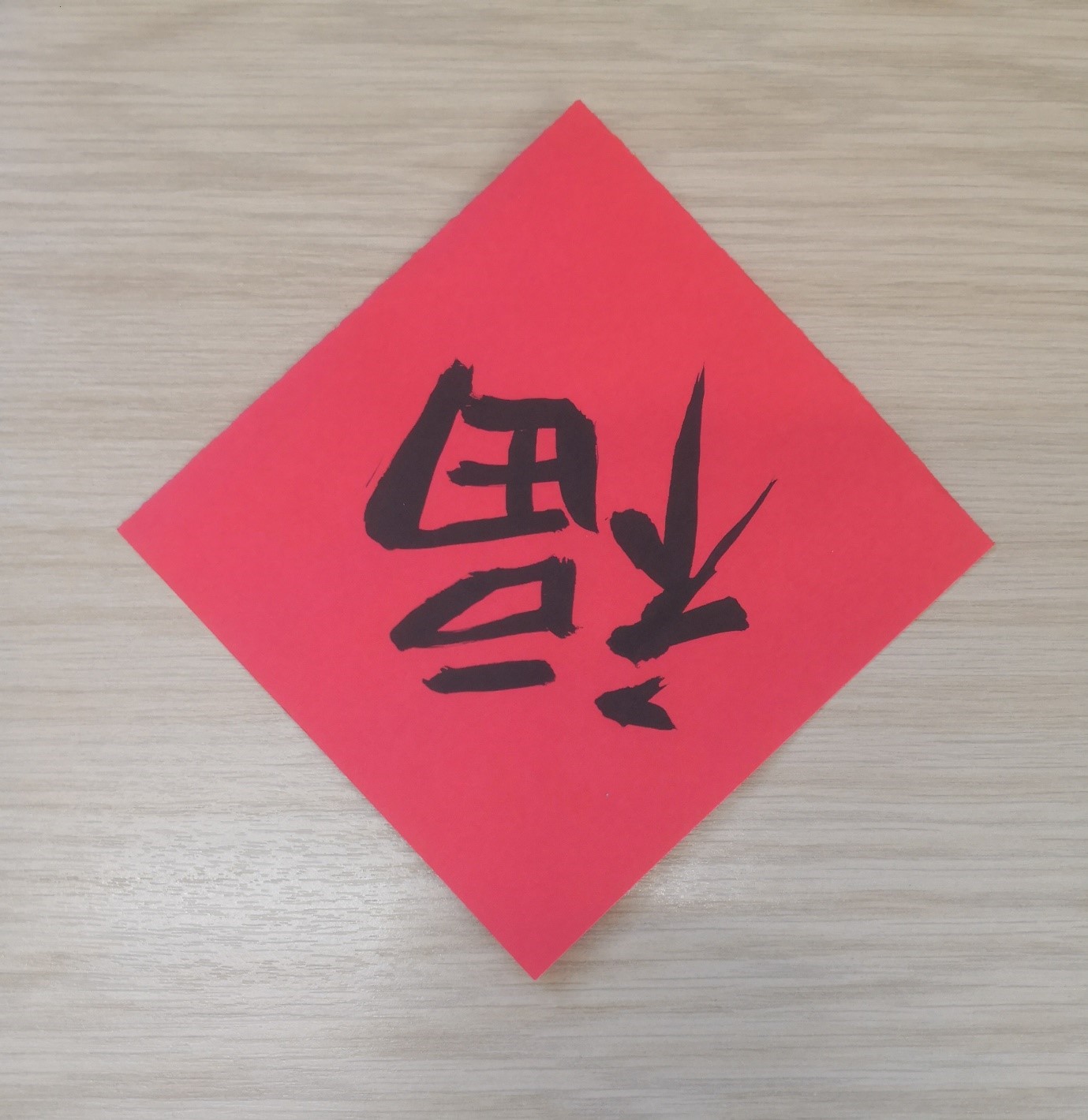(As last year, this post includes Chinese traditional characters and phrases with Cantonese 粵拼 jyutping and Mandarin 拼音 pinyin pronunciations respectively).
Lunar New Year / 農曆新年 (nung lik san nin / nóng lì xīn nián) was on Sunday 22 January this year. Welcome to the Year of the Rabbit, (兔 – tou / tù).
My associations with Chinese New Year are that of a sense of kindness and generosity that have stayed with me since childhood. I have a vivid memory of being in primary school and one of my friends approaching me. Her mother placed a red paper pouch in her hands and, in turn, she placed it in my hands. As I looked over it, I saw a rich, gold-coloured character on the front of it. I didn’t know what it was because it was the first time I encountered it, but I was told to open it and tip the paper pouch slightly. So, I did and out slid a cool, gold shiny pound coin (yes, it was back when the pound coins were just gold!) which landed in my palm. I remember feeling surprised and taken aback at receiving money and thanked her and her family.
Lunar New Year, though, is not just about giving money for the sake of giving money. As I learned later, the act itself of passing on these packets to another person is symbolic of passing on good fortune for the years ahead. It was many years ago, but that memory has stayed with me all this time and I cherish it as a moment of sharing – not only symbols of good fortune, but of her sharing that part of her culture with me.
This year is the Year of the Rabbit. The previous Lunar New Year post contains information on where it is celebrated across Asia as a national holiday and the significance of the decorations, their colours and common characters you may see embellishing them, including Paper Cutting Arts, Lanterns, and the Red Packets I mentioned. You can read this post here. This year, to acknowledge Chinese New Year, we have some contributions from staff across the University who have kindly shared decorations they have made and why Lunar New Year is important to them.
A second post will be coming at this week which will announce the upcoming Lunar New Year festival organised by Dr. Cong Xia Li, the Language Lead for Mandarin Chinese and the Language Lead for Russian in the Department of Languages and Cultures.
Thank you, all, for your contributions.
—
One of Chinese New Year Traditions – Paste paper-cuts to windows (贴窗花)
In the Little New Year, old couplets and paper-cuts from the previous Spring Festival are taken down, and new window decorations, New Year’s posters, and auspicious decorations are pasted up.
Paper-cuts, usually with auspicious patterns, give a happy and prosperous atmosphere of the Festival and express the good wishes of Chinese people looking forward to a good life. In addition to pasting paper-cuts on windows, it is common for Chinese to paste the character “fu(福)“, big and small, on walls, doors and doorposts around the houses. “Fu(福)” shows people’s yearning toward a good life. Some people even invert the character “fu(福)” to signify that blessing has arrived because “inverted” is a homonym for “arrive” in Chinese. Now many kinds of paper-cuts and “fu(福)” can be seen in the market before the Festival.
To generate a celebratory atmosphere for the Chinese New Year, we stick this red paper cutting to our office window at Global Recruitment (international).
—Danhua Wu
A Festival Spent Together
Lunar New Year is always one of my favourite festival as family and friends gathered together during this period of time. We are so busy throughout the year and difficult to have time spending together. However, during the period of Lunar New Year, we always spare some time for each other and have some celebration activities together, like playing Mahjong and hiking. We always play Mahjong as it symbolises friendship and family bonds in Chinese culture. It is also for wishing each other a prosperous year. And we usually go for hiking during the new year period for getting together and it symbolises good health and good luck.
Wishing everyone a happy, healthy and prosperous Year of the Rabbit!
–Anthea Im
Celebrating Lunar New Year with English friends
This is my sixth Lunar New Year in Reading. While I can’t go back to China because of work, it is also a good opportunity to celebrate the Lunar New Year with English friends in Reading. Many friends enjoy making Dumplings (Jiaozi, 饺子). These round dumplings signify family reunion. Because dumpling shape resembles ancient Chinese money, they also represent prosperity. Often, a coin is put inside one of the dumplings, and a lucky person will eat it.

Calligraphy is important in understanding Chinese history and traditions, particularly during the Lunar New Year. The character 福 (fú) can be found on the walls and doors in almost every home. Fu means ‘good fortune’, and posting the character upside down means they want the ‘good fortune’ to “pour out” on them.
May your year 2023 of the Rabbit be full of happiness and health!
— Dr. Hong Yang
Happy Lunar New Year , 2023.


